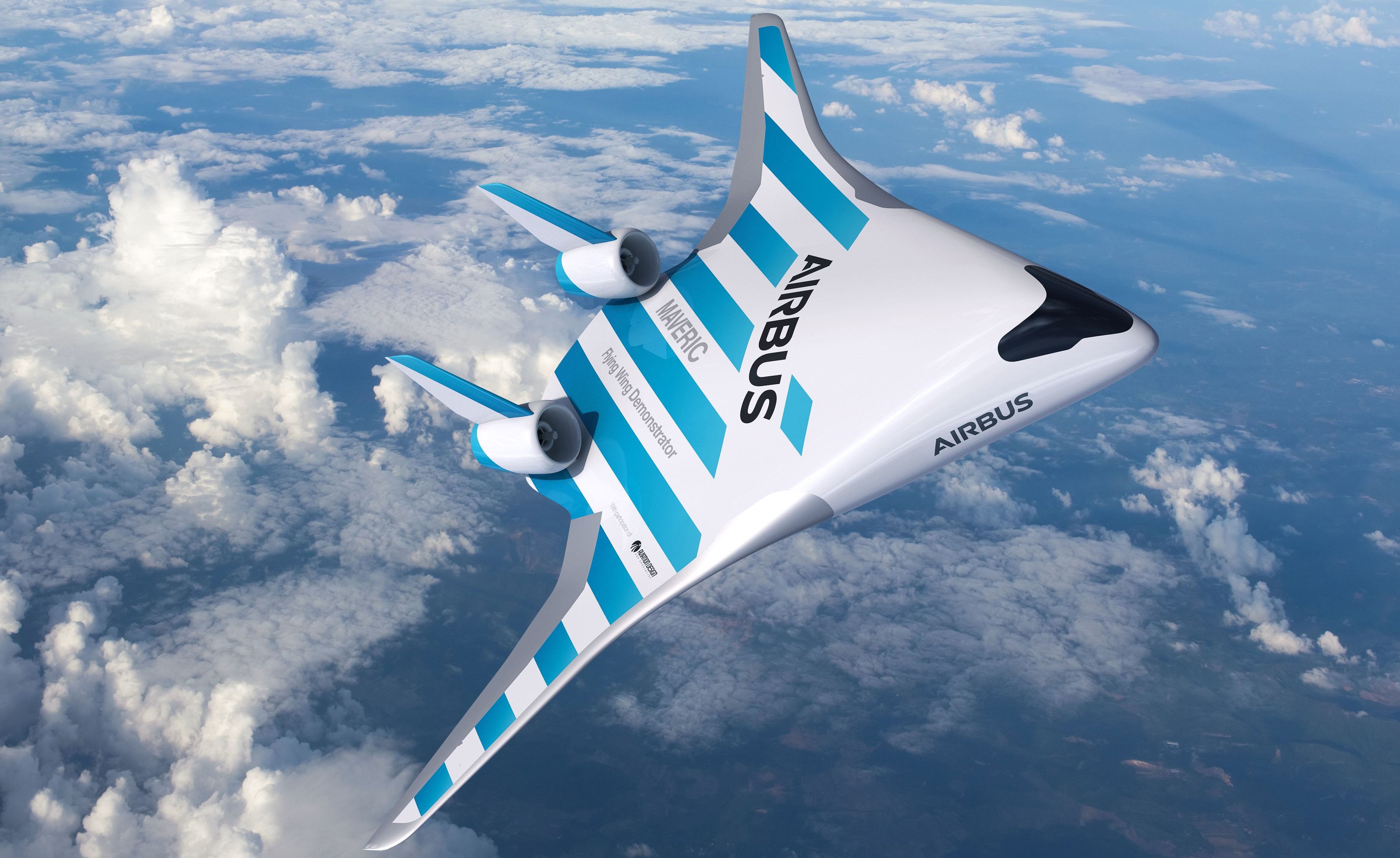That's quite a mouthful, but fortunately we love acronyms in the aviation industry and this one is now better known as MAVERIC. Airbus believes the disruptive aircraft design has the potential to reduce fuel consumption by up to 20% compared to current single-aisle aircraft. Meanwhile, the configuration also opens up new possibilities for propulsion systems type and integration, as well as a versatile cabin for a totally new on-board passenger experience.
MAVERIC is not new and was actually launched internally in 2017, and the two metre long and 3.2 metres wide model aircraft with a surface area of about 2.25 square metres made its first flight in Jun-2019. Since then the flight-test campaign has been on-going and will continue until the end of Q2 2020, says Airbus.

Although there is no specific time line for entry-into-service, this technological demonstrator could be instrumental in bringing about change in commercial aircraft architectures for an environmentally sustainable future for the aviation industry.
We haven't seen any major changes in aircraft since the arrival of the jet engine in the middle of the last century, but technological advances have made each generation of aircraft significantly more efficient than their predecessor. In terms of design, the neo and MAX in the single-aisle market are almost identical to earlier versions of the short-haul types, while the A350 and 787 share the same basic fundamentals even though they have evolved slightly in design.
Many believe the next stage in aircraft design could see a fundamental change both in terms of how aircraft will look and also how they will be powered. The Blue Swan Daily reported in Jun-2019 about a new collaborative agreement between KLM and Delft University of Technology (TU Delft) together on making aviation more sustainable. This involves researching into an innovative flight concept known as the "Flying-V", which embraces an entirely different approach to aircraft design, in anticipation and support of sustainable long-distance flight in the future.
https://corporatetravelcommunity.com/klm-joins-forces-with-tu-delft-to-develop-sustainable-solution-for-the-industry-with-new-thoughts-on-aircraft-design/
Sustainability has, and will remain, a major talking point for aviation and their has been an increasing call for further tests into the potential for electric aircraft. easyJet last month revealed that its partner Wright Electric is advancing engine development for its flagship 186-seat electric aircraft, named Wright 1.
Wright Electric is engineering electrical systems at the megawatt scale which will be necessary for commercial flight for its 186 seat electric aircraft. It is building a 1.5 MW electric motor and inverter at 3 kilovolts. These components will form the powerplant of Wright's revolutionary Wright 1 aircraft and move towards aiming to pave the way for a future of zero emissions flight in Europe and worldwide.
The company intends to conduct ground tests of its motor in 2021 and flight tests in 2023. It is in discussions with BAE Systems relating to flight controls and energy management systems.

Back to Airbus and the European manufacturer is using its core strengths and capabilities of engineering and manufacturing, in close collaboration with an extended innovation ecosystem, to accelerate traditional research and development cycles. By doing this Airbus says it is able "to achieve proof of concepts, at a convincing scale and speed, thereby driving forward maturity and increasing their value".
Through AirbusUpNext, a research programme, Airbus is currently working on a number of demonstrator projects in parallel; E-FAN X (hybrid-electric propulsion), fello'fly (v-shaped "formation" flight) and ATTOL (Autonomous Taxi Take-Off & Landing). The Blue Swan Daily featured the fello'fly concept earlier this year.
https://corporatetravelcommunity.com/studying-migrating-bird-flying-patterns-could-ultimately-change-how-we-fly-but-will-consumers-be-convinced-over-formation-flying-of-commercial-airliners/